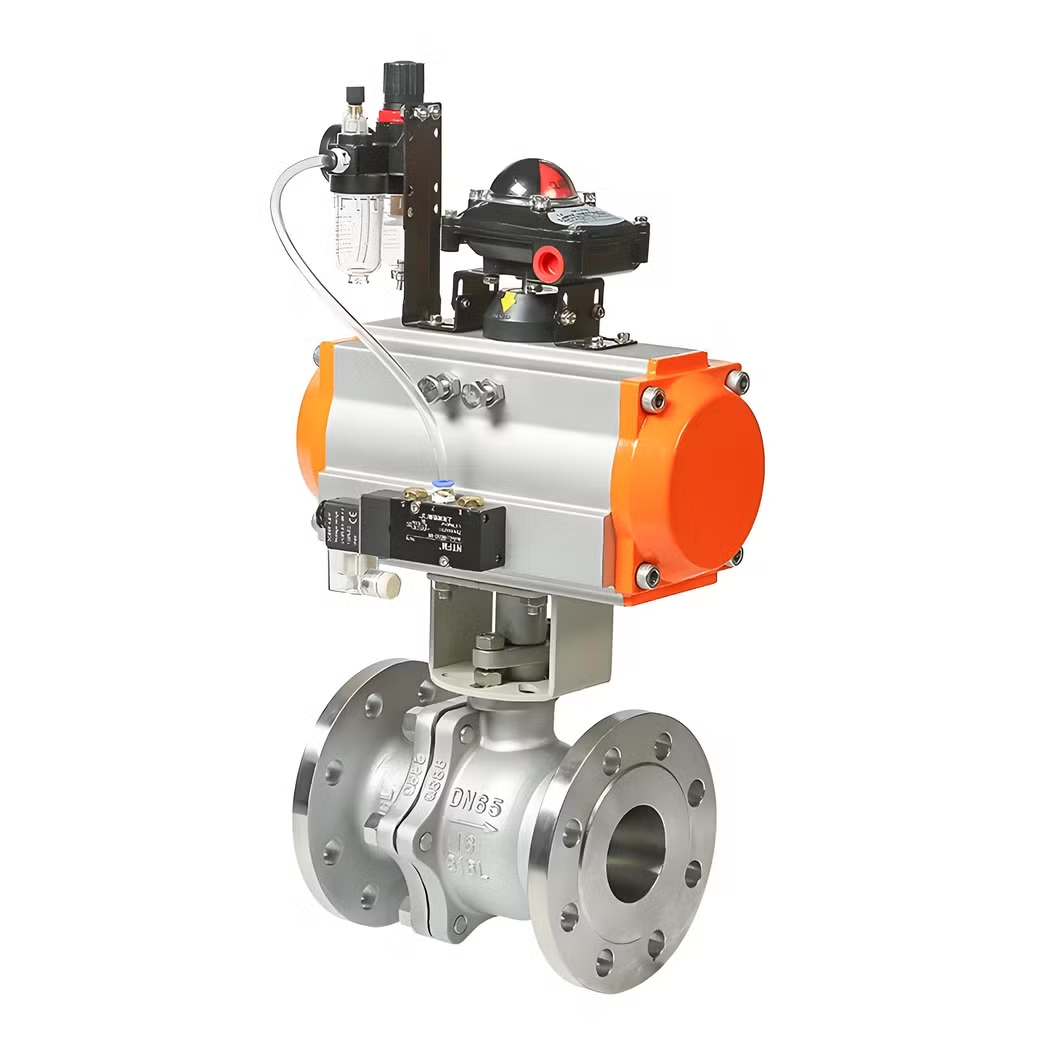Basic Info.
Product Description

The ball valve can be closed tightly with only 90-degree rotation and a small rotating torque. The completely equal inner cavity of the valve body provides a direct flow channel with little resistance for the medium. Generally speaking, the ball valve is most suitable for direct opening and closing, but the recent development has designed the ball valve to make it have the function of throttling and controlling flow. The main feature of ball valve is its compact structure and easy operation and maintenance. It is suitable for general working media such as water, solvent, acid and natural gas, and also suitable for media with bad working conditions, such as oxygen, hydrogen peroxide, methane and ethylene. Ball valve body can be integral or combined.

Pneumatic stainless steel ball valves offer several advantages, including:
Corrosion resistance: Stainless steel construction is highly resistant to corrosion, making the valve suitable for use in corrosive environments.
Durability: Stainless steel is a durable material that can withstand high pressures, temperatures, and mechanical stress.
Hygienic properties: Stainless steel surfaces are smooth and easy to clean, making the valve suitable for applications where cleanliness is critical.
Automation: Pneumatic actuation allows for remote operation and automation of the valve, improving efficiency and reducing the need for manual intervention.
Versatility: Pneumatic stainless steel ball valves can be used in a wide range of industrial applications, including process control, fluid handling, and HVAC systems.

- Ease of Use: They open and close quickly using minumal force with a simple 90 degree (quarter-turn) of the handle and require no tools for operation.
- Quick Installation: They are quick and easy to install using simple threaded ends as a method of connecting in-line to an application.
- Versatile: They are good for high pressure, high temperature and high flow making them suitable for a wide range of industrial applications.
- Durable: Their simple robust design provides resistance to general wear and tear ensuring a long service life of reliable use.
- Reliable: They are designed for repeatable use of leak free service, that is to repeat their function of opening and closing flow in the same way for the life of the valve.
- Cost Effective: They are the most cost effective of all the valves.
- Low Maintenance: Since they are low maintanance and require little to no service, this results to additional long term cost savings.
- No Lubrication required: The seats holding the ball function well in wet and dry situations.
- Low Pressure Drop: They have a high flow capacity and low pressure drop due to the size of the bore in the ball. when fully open there is little to no resistance to the flow of fluid.
- Compact: Smaller than other options like gate and butterfly valves.

Ball Valve Components
Although there are numerous parts making up the valve the basic components are made up of the following:
The Valve Body
Also referred to as the valve housing or shell, it contains all the inner components of the valve. Usually composed of a rigid metal, in this case Stainless Steel, it protects all the internal components and keeps them in the correct position and aligned for proper functioning. It also facilitated access for the external handle to connect with and rotate the internal ball, via the stem. The valve body comes in three assembly options: one-piece, two piece and three-piece designs.
The Rotary Ball
This is the part that gave the valve its name. It is a ball that has "flow path" known as a bore, through the center that allows the medium to flow through it. The ball is rotated by the stem, which either opens the flow when the bore is in-line with the pipe or closes the flow when the bore is perpendicular to the flow. There are two types of bore design: Full port and Reduced port.
The Stem
Also referred to as the shaft, it connects the external handle that rotates the inner ball. The Stem has washers and packing rings to ensure a tight seal and to prevent any leaks. The stem is rotated as the handle is turned, which in turn rotates the ball, opening and closing the flow.
The Seat
The Seat sits between the ball and the valve body and ensures a water tight seal. There are two seats that sit on either side of the ball and are usually composed of (PTFE).
The Handle
The handle is also often called the lever. it a standard ball valve it is the manual way used to turn the ball valve to the open or closed position.
















